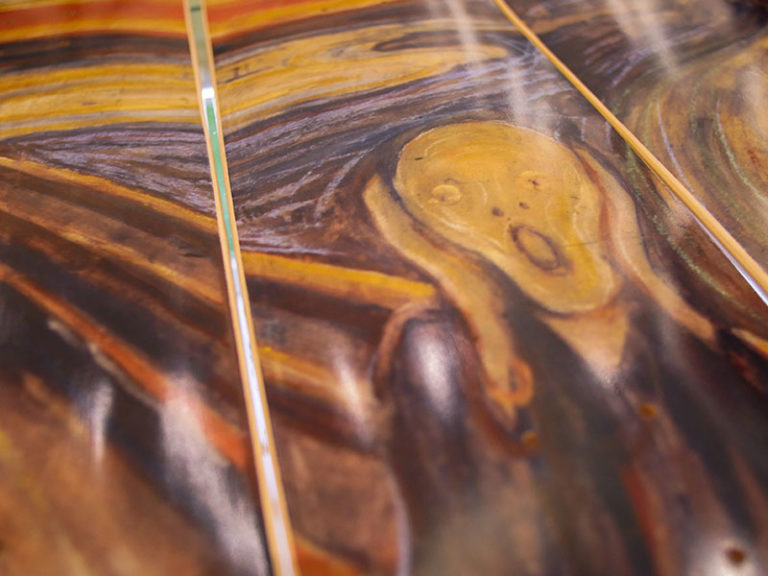MUNCH
Edvard Munch Skateboard Triptych – CThe Scream (1893)
Edvard Munch Skateboard Triptych – CThe Scream (1893)
Couldn't load pickup availability
Bringing together tradition and contemporary culture, Musart Boutique is proud to present our exclusive original collection Musart on Decks featuring limited edition skateboard decks, displaying art historical timeless masterpieces which bridge the traditional history of art and contemporary skateboarding culture at accessible prices. Part of Musart Boutique's original collection Musart on Decks comes this exclusive limited edition of 100 Edvard Munch Skateboard Triptych features his iconic work The Scream (1893) . The Norwegian symbolist artist Edvard Munch's iconic series of four versions of his work titled “Der Schrei die Natur” (the scream of nature) popularly known as “The Scream”. Three of the original four versions made as both tempera and pastels are currently found at the National Gallery in Norway, however, one of the four versions in pastel was auctioned in 2012 at Sotheby's Impressionist and Modern Art auction to a private collector for nearly $120,000,000, making it the second highest price achieved at that time by a painting at auction. In a diary entry by Edvard Munch dating to January 22, 1892 the artist states: “I was walking along the road with two friends – the sun was setting – suddenly the sky turned blood red – I paused, feeling exhausted, and leaned on the fence – there were blood and tongues of fire above the blue-black fjord and the city – my friends walked on, and I stood there trembling with anxiety – and I sensed an infinite scream passing through nature.” Edvard Munch's “Scream” is often described as a representation of the existentialist feelings and moods characterizing the nineteen-century Fin-de-siècle period. Like Leonardo da Vinci 's Mona Lisa, Edvard Munch's The Scream is one of the most iconic artworks in the history of art with its androgynous figure, skull-shaped head, elongated hands, wide eyes, flaring nostrils, and open mouth, which has now been ingrained forever in our collective cultural consciousness.
- Photo Credits: © Artists Rights Society (ARS), New York. Scala/Art Resource, NY.







